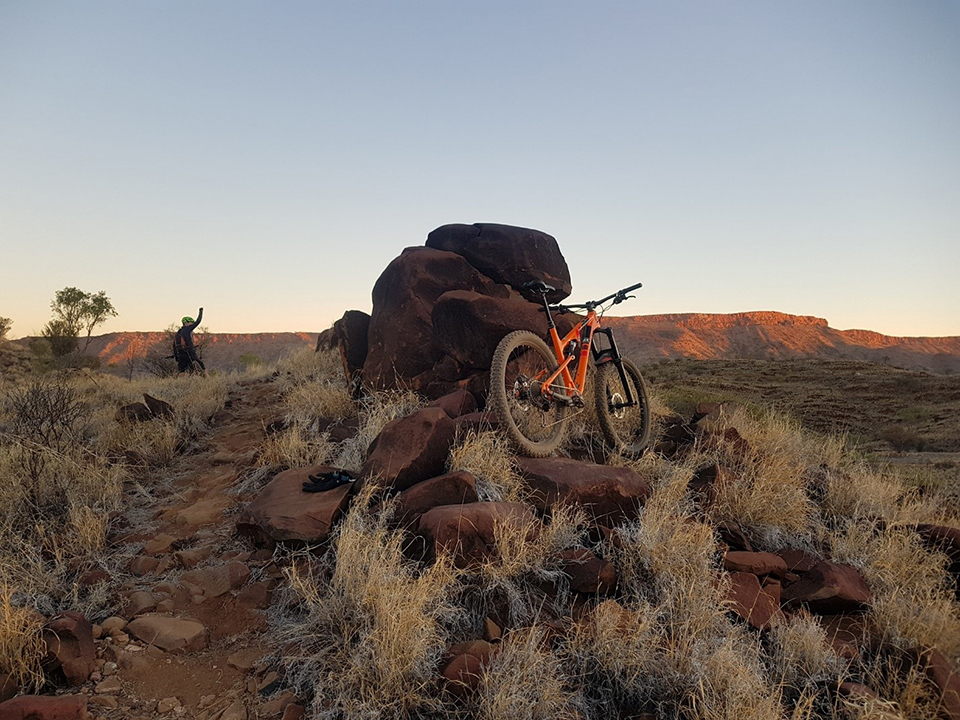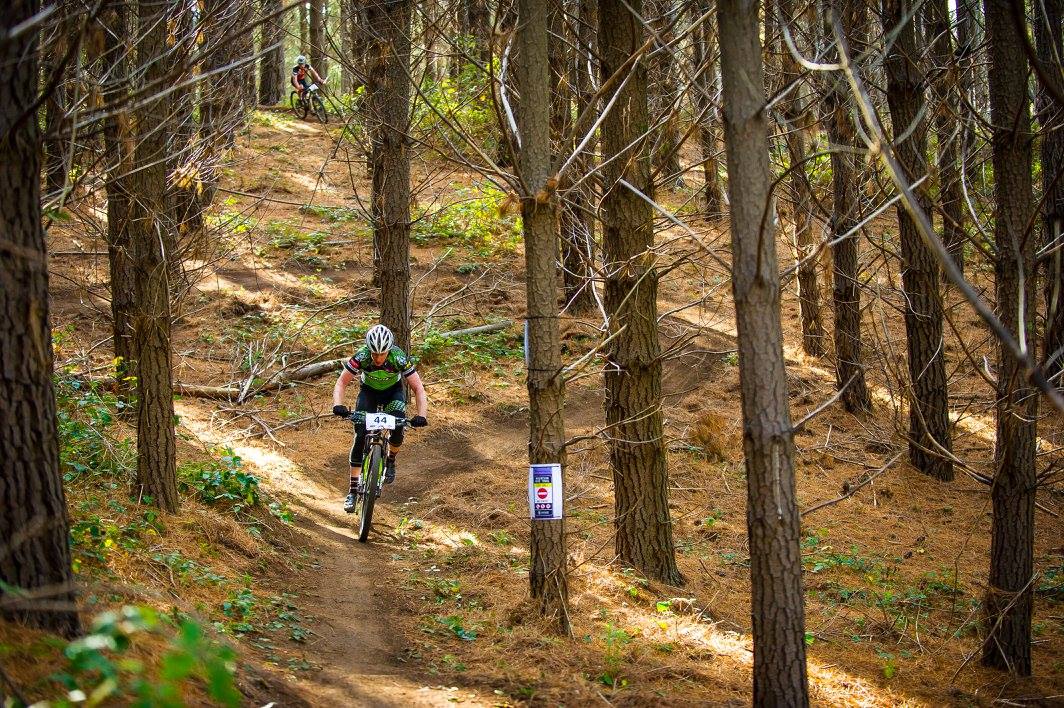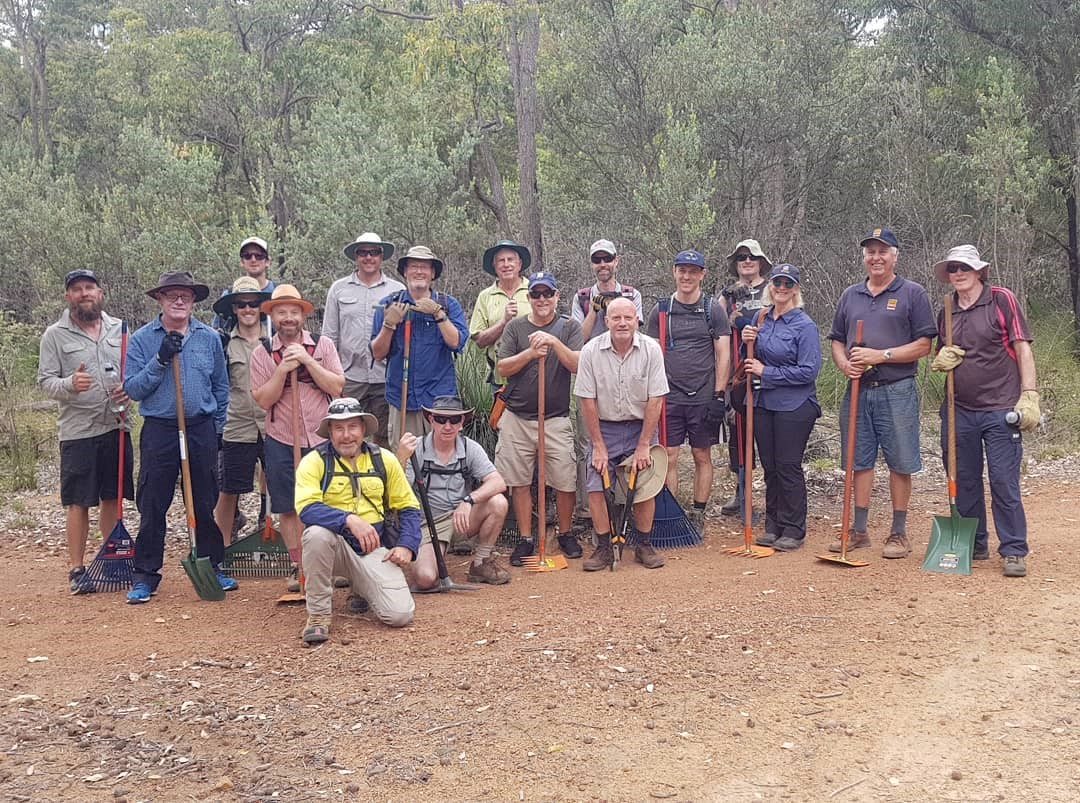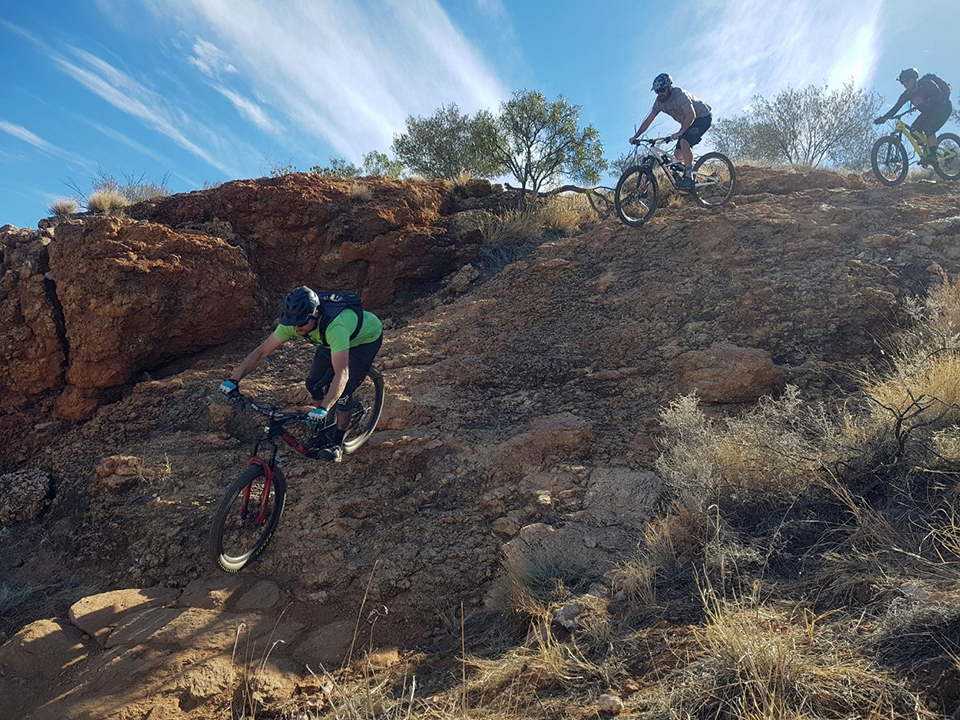- connecting our global network
28 August 2020
Mountain trail biking and the importance of the journey

Nick Bowman
Director, Destination Trails
Bachelor of Applied Science (Conservation and Park Management)
Nick Bowman is proof that you can turn your passion into a fruitful and successful career. Doing what you are passionate about, more often than not, is an authentic way to produce tremendous work with a labour of love, and this could not be truer in Nick’s case.
The keen mountain trail biker (MTB) developed an obsession for bikes growing up and quickly became intrenched in the lifestyle. Hooked on the freedom of riding and gratification of a day well-spent hurtling through the stunning Adelaide Hills, Nick became an expert in all things mountain trail biking and soon could not imagine doing anything else.
When he wasn’t playing Hacky Sack at the University of South Australia, Nick was immersing himself in Conservation and Park Management, gaining knowledge that has continued to inform and influence his career and creations since. After roles promoting sustainable mountain trail bike opportunities around the country, sharing his knowledge and skills to design world-class trails and with Bike SA, IMBA Australia and World Trail Australia, ever ambitious, he established his own company.
Destination Trails craft thoughtful mountain bike trail networks to enhance and compliment the iconic Australia landscape. Nick and his team work towards establishing sustainable and proactive community programs, legitimate trail access, and acceptance of the mountain bike in our beautiful rugged nature – all while “crafting journeys into nature”.
Nick has generously taken us through his background and process behind each project, what he sees for the future of the industry, the satisfaction in creating something so tangible and why we should all pay more attention to the journey once in a while.

When did your love of Mountain Trail Biking (MTB) begin? Is it something you’ve been involved in since childhood?
I started riding BMX bikes in the early 1980s. I was hooked. Hanging out with the cool kids, doing skids and building dirt jumps, and that went on for a long time! In the early 90s I got a road bike which was a great way to enjoy the Adelaide Hills, but I soon noticed that MTB was going to be way more fun and social.
I already had a love of the trails from early bushwalking expeditions, so the MTB seemed like a natural progression. Then I was even more hooked! Mostly though, I have always ridden bicycles, any kind of bike! On the bike is my happy place and more than that, its recreation, transport and freedom! It was that way as a kid and not much has changed.
Could you tell us a bit about Destination Trails? Why you decided to branch out on your own after roles with IMBA Australia, Bicycle SA, and World Trail Australia?
Destination Trails is a professional company specialising in trail design and construction, which also involves trail maintenance and consultancy around the benefits of trails. We also provide ‘Trail Workshops’ for organisations, MTB clubs, and government, which is aimed at giving volunteers the knowledge and skills they need to design and build their own trails. Through this knowledge sharing we aspire to help communities grow and prosper on all levels.
Forming my own company was both a desire and a necessity. After years of helping a wide range of communities develop trails, flying back and forth across the country, and spending too much time in front of the computer, I just wanted to get back to where I started and back to the reason of why I got involved in the first place; to create trails. Really good trails! Personally I find it quite satisfying to create something physical; tangible, useful and beautiful. It has been better for my physical and mental health too.
In a way I also had to prove to myself that I could do it after years of telling everyone else how to do it. When I started down this path as the Trail Officer at Bike SA in 2002, we were still only using basic hand tools to build trails. Then everything became mechanised and much more specialised, so I had to learn how to drive machines and keep chainsaws working in good order, so it was a bit of learning curve. Some may even call it a mid-life crisis! But the other reason to start my own company was that it fitted much better into family life in the Adelaide Hills. Working for World Trail in Tasmania was incredible and I loved it, but I was away from the family too much and I couldn’t talk them into moving to Tassie! So yeah, the endless quest for work/life balance is part of it!

What does designing and building a trail or world class mountain bike courses actually involve?
That’s a big question! Well it seems to be a combination of discipline, community engagement, creativity, respect, empathy, and lots of hard work. For any area wanting these kinds of trails we start with conceptualising loops using maps or geographic information systems (GIS), then it’s time to get out on the ground and start planning the physical trail alignment. Sometimes I might get the chance to explore first to find the really iconic features of the site so that we can then link them up into a trail experience. Nice views, rock outcrops, natural trail features, points of interest, basically. This is when the discipline comes into it because it’s best to follow the guidelines for sustainable trails.
Using a clinometer, we aim to flag out suitable gradients in the most appropriate locations. This process is the proven way to make great trails. From experience we need to listen to what the locals want, and respect local soils, and climatic conditions. I try my best to create a trail that sits lightly on the land but is still fun for the majority. Quite often it feels like I am being guided through the landscape by the ancient spirits as a kind of synchronicity starts to occur, and a strong sense of it’s meant to be prevails. Other times is just doesn’t feel right, so it’s best to reassess and try something else. Principally ‘measure twice, cut once’ is a good way to proceed.
Once the trail design is signed off and construction can start, it’s all about making the trail long lasting. Do it right the first time so to speak! There is no substitute for quality. Furthermore, if you can go above and beyond to make the trail experience outstanding and add something special, then you are well on your way to creating a ‘world-class’ trail.
For more detail I recommend my book ‘Zen and the Art of Trail Maintenance’!

You studied Applied Science (Conservation and Park Management) at UniSA, how does this impact the way you produce trails, their sustainability, and the way they complement the environment?
Having studied Conservation and Park Management has provided me a great deal of insight into where is the most appropriate location for MTB trails, but also how different soils and ecosystems produce different results for trails and what may be required for maintenance.
Understanding conservation objectives and land management requirements has been paramount to my success in this field. In the beginning of my career the skills and knowledge I gained at university enabled be to find common ground between the bike riders and land managers in order to find a way forward, together.
What challenges have you come up against in your career advocating for sustainable trails and developing cycling policies?
20 years ago, there was a lot of prejudice against bicycles in natural areas. It was new and definitely caused impacts on the older walking trails which were not designed for bikes. There were also the perceived risks around shared use and potential collisions on trails. Unauthorised trail construction also caused impacts too.
Moreover, there were elements of the MTB community that were quite radical and difficult to deal with, which didn’t help. All in all, over time we managed the address all of these concerns and ensure bikes could get accesses to public open spaces with a sensible, rational land management approach.
Are there any projects or particular trails you are proud of creating over your career?
Professionally, the chance to work for IMBA Australia was a dream come true and helping all states to work through their Cycling in Parks Policy development was intense and humbling. It was a pivotal time for MTB access in Australia. And, at the same time, I was able to meet like-minded people all over the country and help them to realise their trail dreams too. That was the best part. Mountain bikers are great people! I was also lucky enough to visit many beautiful places I would not have seen otherwise and meet great Park Rangers who do amazing work on the land.
Personally, it has been amazing to be part of development of Fox Creek Bike Park (Cudlee Creek Forest) since 2002. It’s not been the big budget project it could one day become so everything that has been achieved to date is at the grass roots level in an organic fashion. It has been amazing to work with ForestrySA and the bike clubs to achieve great outcomes for all. All this has meant that I have put countless volunteer hours into making that place special. It’s been a home away from home, and those trails have been the home trails for a long time. I’m proud of what I have helped to achieve there and it has been so good to see the Adelaide Hills community thrive in the face of many challenges.
At the end of the day, when you see people having fun on the trails you’ve made, it’s the best feeling of all and certainly evokes a sense of accomplishment.

What positive outcomes could we see for tourism, health, economy around Australia if more emphasis was put on mountain biking and trails?
Well places like Derby (Tas) and Thredbo (NSW) are already seeing massive benefits from their investment in good quality trails. Many other destinations are looking to capitalise on trail tourism too! But not every trail network can become a world class destination, and that is okay.
A good trail network lets locals connect with nature without impacting on it, and this helps us mentally, physically and spiritually. The flow on effects of this positivity is hard to measure, but it is sure to enhance lifestyles and in some case property values!
In a town like Melrose (Southern Flinders Ranges) even a modest amount of trail tourism has allowed the school to stay open and the bike shop to prosper. This means sustainable jobs for locals. As the trail network grows, it means young people have a future in their home town, and don’t have to move away from family to find work. To put it simply, it’s quite easy to make money from MTB tourists; sell them strong coffee in the morning and craft beer in the afternoon!
Lastly, do you have a favourite trail or ride you have taken anywhere in the world?
I am a bit spoilt! I have ridden is some pretty exotic places, but the standout trail is one called ‘The Whole Enchilada’ in Moab, Utah. 2400 vertical metres over 40 kilometres, from high alpine to blazing desert next to the Colorado River. Mindboggling scenery and an outstanding day out that is for sure!


